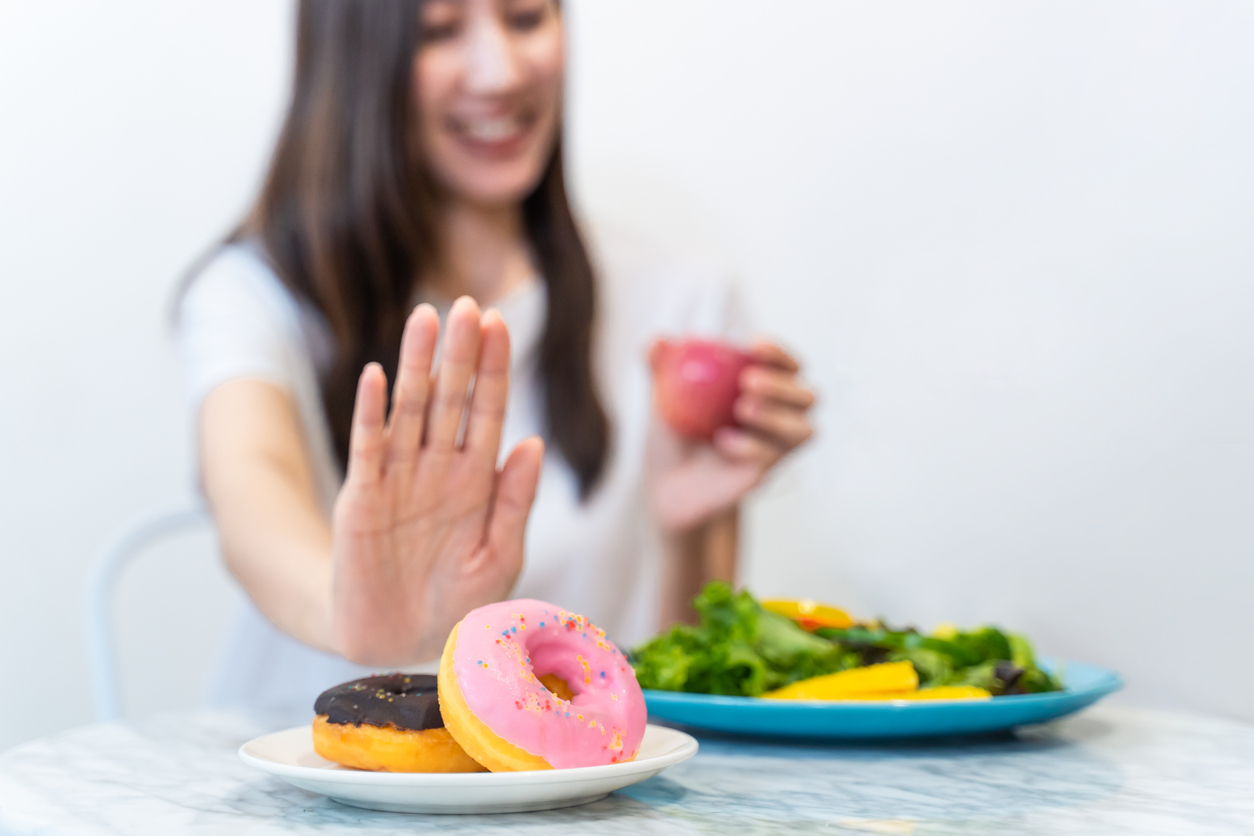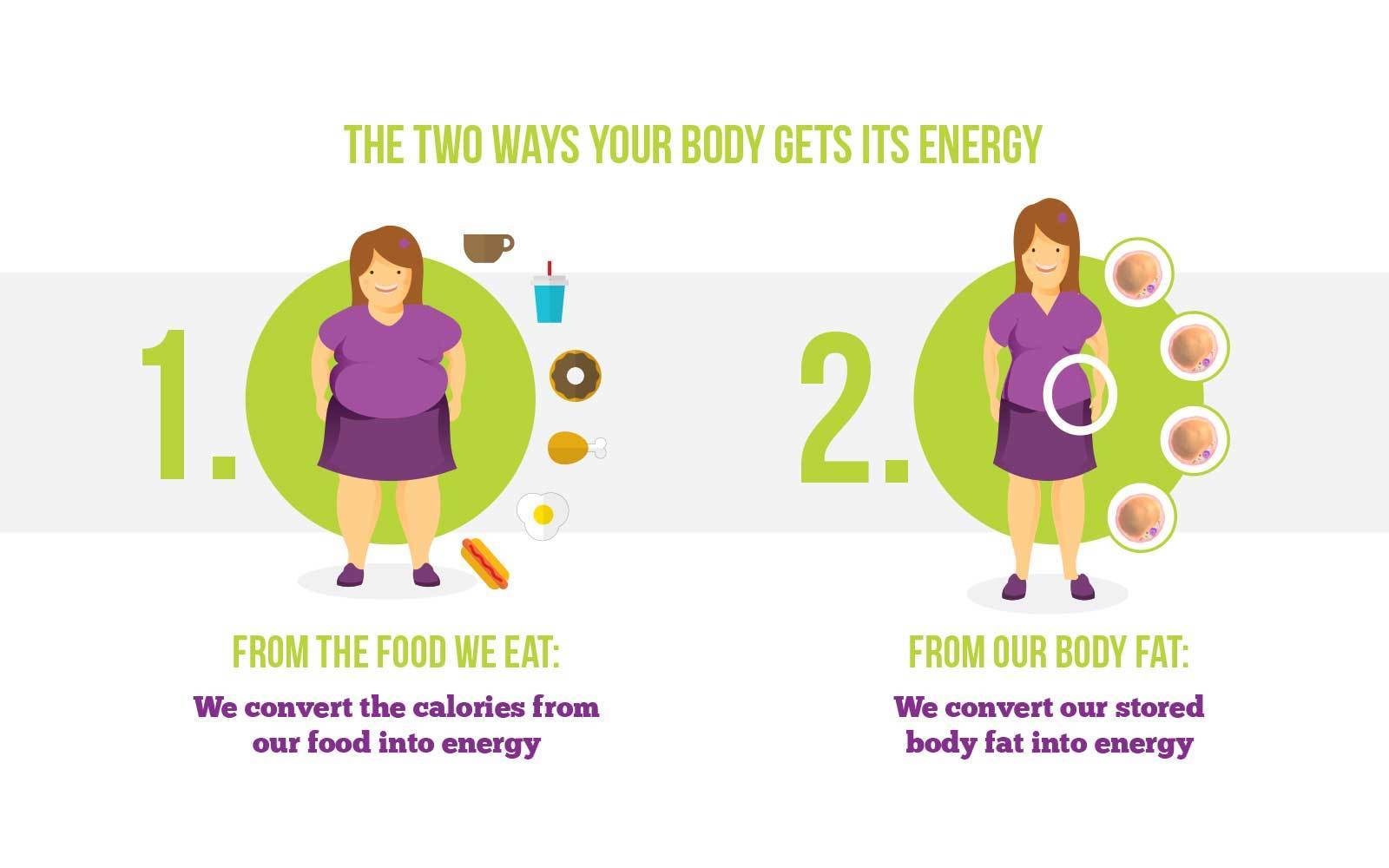This is the time of year when a majority of the country has decided to make weight loss or health their resolution. New memberships fill up the local health clubs and pretty pictures of nutritious meals grace the newsfeeds of Instagram and FaceBook. Even as I write this, my husband and I have sworn off wine for a month (he’s going to cave before I do). With all these aspirations of health and wellness on the horizon, why does the adult obesity rate in this country continue to climb? Most of the overweight population seems to be aware—they know they need to lose weight. Well, there are several reasons they leave that dream to flap in the wind. The most common seems to be the overwhelming fear of not even knowing how to get started and doing it wrong when they do.
The Problem with Weight Loss Goals
Whether they are obese or simply on the heavier side, most people know what it’s like to carry extra weight. It’s embarrassing, frustrating and can lead to the worst kind of depression. Logic says that no one wants to feel that way, right? So why do so many people seem to remain stuck there? The problem is the end game is always the same: weight loss, above anything else. This leads to a google search, which then leads to the black abyss of calorie and carb cutting, sugar-free, dairy-free, extra fat, Mediterranean, Paleo, plant-based, no gluten, high protein…
Who wouldn’t be discouraged after that? No one knows how to even begin!
But…what if we change the goal and focus on improving overall health and gaining more energy? What if we ditch the number on the scale and simply focus on the most important thing the body needs to do before it does anything else: HEAL.
Welcome to the rest of your healthy life…
Steps to Weight Loss
Weight loss usually means change and you have to prepare to change your life. Most people do this by eating all the junk food in their fridge and then eating very little after. But then what? Now they’re starving, so their body stores fat instead of burning it. They’re working out more than they ever have in their lives, which is only making their unfed/unfueled bodies panic and strike back, leading to inflammation. Then comes the exhaustion, fatigue, and lethargy. For all the good they’re trying to do, they’re making their health worse. Like everything, a healthy lifestyle takes planning. Most of all, it takes LEARNING—and the why’s and how’s are the most important part.
Step One: Detox
Fortunately, the human body is well-equipped to eliminate toxins. You just have to give it the right environment to do so and it will do its job. This is the most grueling piece in the transition to a healthy lifestyle and usually the part where most people give up. It can be easy or it can be downright brutal. Here’s why: A detox involves getting rid of all the bad to make room for the good. During a detox, you’re eliminating inflammatory, processed foods—the garbage and chemicals. This means that your body is going to go through withdrawal—just like with drugs or alcohol. All the achy, flu-like feelings, the irritability and nausea, headaches, brain fog, constipation, hunger, itchy skin, fatigue and sleep difficulties are signs that your body is healing. Remember, you are undoing YEARS of abuse. It’s going to get worse before it gets great, but it’s all worth it. You are on your way to getting clean!
Warning:
Detoxing can be dangerous, so it’s important to know what your body needs and how much it can take. If you’re going to attempt a detox with product support or anything more than an elimination diet, you will need to seek help from a certified practitioner. At Forum Health Clarkston, we can help you find the right detox to fit your body and guide you in a safe direction.
Step Two: Lose the “Metabolism Death Foods”
You don’t just need to know what to avoid—you need to know why:
Sugar:
This word should come with a blazing red warning above it: DANGER! Sugar causes weight gain. It’s dangerous as it feeds diseases like obesity, diabetes, cancer, and cognitive decline. Even worse, it’s difficult to eliminate because it has many names like fructose, corn syrup, dextrose, brown sugar, raw sugar, juice concentrate, and maltodextrin to name a few. How can you avoid it? READ LABELS. If it sounds like a chemical, it probably IS a chemical and you don’t want it in your body. Replace your favorite recipes with NATURAL, organic sweeteners like raw honey, maple syrup, agave, and dates. Use with caution, however—even natural sweeteners need to be consumed in moderation.
Refined Grains:
It makes me so sad when I see people being tricked with pretty words like “Whole Grain Wheat” and “Multigrain.” I wish they’d be honest and say what’s really being consumed: Gluten and starch—nothing the human body needs. Gluten, whether you have a noticeable intolerance or not, causes inflammation in the body. It does not create metabolism. Inflammation actually works against metabolism. So, replace those grains with fruits and vegetables. If you really need that bread, choose a gluten free bread or even make your own using almond flour—a low-carb flour high in protein, manganese, vitamin E, and monounsaturated fats. WARNING: there is a potential risk for those with allergies, so make sure you consider this when serving anything to someone who may be allergic to nuts.
Processed Foods:
If it comes in a bag, box, or can, it’s probably processed. Take a container of hummus, for instance. Hummus sounds pretty healthy, right? Chickpeas? Sign me up. Some of us can make hummus at home, but really, who has time for that? It’s so much easier to grab a tub of Sabra from a shelf—or not. Have you ever read the label? Chickpeas, tahini, garlic, lemon…potassium sorbate. Do you know where to find potassium sorbate? I certainly don’t have it on my spice rack. That, friends, is a preservative meant to extend the hummus’s fridge life. But, WHY, I ask, would we not eat the hummus? We don’t need its fridge life extended. We bought it, so we should eat it. If preservatives like potassium sorbate are meant to preserve foods in even the toughest natural conditions, do you believe your body’s natural ability to digest and break them down is any match against a preservative? Think: The Whopper that never turns green. That undigested food laced with preservatives is just sitting in your gut, damaging the lining and allowing food particles and toxins right into your otherwise sterile bloodstream. You are definitely not losing weight with leaky gut. Quick tip: When you’re reading labels, if you can’t say it or it isn’t something you could grow/raise on your own, you don’t want it.
Restaurants:
I know. This one is tough and it’s usually a deal breaker on the journey to health. Most of the population works to live on the weekends and Friday through Sunday seem to be spent at our favorite restaurants, sitting over a comforting meal, with a cocktail in our hand as we unwind with loved ones. Let me tell you why that favorite pastime is hurting you: 1) You have no idea where that food came from. It might be a salad, yes, but how much sugar is in the side of dressing? Where did the chicken come from? Was it fresh? Stuffed with antibiotics and chemicals? Is it loaded with toppings? Does it have gobs of cheese on top? Should we even discuss the bacon? 2) Who made it and when? What were they doing and what did they touch? Yes, let your imagination run wild on this one. Did I mention I was a waitress in my younger years? 3) Most restaurants rely on heavy additives and excessive sodium levels in their foods to make them taste more appealing. Facts! They also depend on ingredients loaded with preservatives to save a buck on the bulk foods they need to buy. 4) You’re probably going to overeat, as we usually do when huge portion sizes are placed in front of us and we mindlessly pick at them long after we’re full.
Give it two weeks of cooking from scratch, using healthy, whole foods. You’ll notice the weight dropping. You have a ton of bloat and inflammation to lose and that is the best place to start. If you don’t know how to cook healthy, take a class or even Pinterest is a nice step.
At Forum Health Clarkston, we offer grocery store classes to help ease people into a healthy lifestyle. We teach how to read labels, healthy eating on the run, and even help you find alternatives to things some might not want to let go.
Try these Fat-Burning Foods to Revive Your Metabolism
Quality Protein:
Protein gives your body the fuel needed to burn fat because they are the “building blocks” of muscles. However, it’s important to know what kind of protein you should be consuming because there are many sugar-loaded impostors out there. The tip is to go as natural as you can: Try to stick to sources like grass-fed beef, organic chicken, pasture-raised/free-range eggs, and wild-caught fish like salmon and cod. Leaner meats like lamb and venison are also great choices. For a plant-based diet, sources of protein can be found in chia seeds, organic tofu, quinoa, lentils, chickpeas, almonds, or even a third-party tested, plant-based protein powder would do the trick. Be aware when reading labels. If there is anything in the ingredients other than the protein source itself, hard pass; find another source.
Healthy Fats/Oils:
Contrary to popular belief, fat doesn’t make you fat. Now, don’t go running for the nearest bag of cheddar and melt it over a pound of bacon. This is why so many people get the keto diet so wrong. There are processed, bad cholesterol-raising, gut-killing fats and then there are good, clean, healthy fats that we need to fuel our bodies. Coconut, for example, contains medium chain fatty acids—a healthy fat the body can easily burn for energy. Start your day off with a serving of full-fat coconut milk in your coffee or protein shake to turn your body into a fat-burning machine. Olive oil and avocados are another healthy fat to include in your diet. They’re both loaded with monounsaturated fatty acids—a type of unsaturated fat that supports weight loss, reduces inflammation, and fights heart disease and cancer. Other healthy fats to include in your diet are nuts, eggs, fatty fish, and some cheeses like goat and feta. Oils: Steer clear of dirty oils like vegetable, canola, and sunflower oils, which are super processed and full of saturated fats that can really damage the body. Instead, choose healthy oils such as olive, avocado, or coconut oils.
Veggies:
Once you get the hang of this new lifestyle, you’ll be able to find the most creative ways to get your daily intake of greens. This is important because vegetables are the body’s highest source for vitamins and minerals. They regulate metabolic function and support the thyroid. Green, leafy veggies like kale, spinach, and cabbage should be at the top of your list. Sneak them into your morning shake; load them up in your afternoon or evening salad and even steam them into your favorite soups. Keep a variety of healthy favorites on hand like cauliflower, broccoli, asparagus, and Brussel sprouts to complete a meal or to enjoy as a snack.
Step Three: Supplements for Weight Loss and More
Even the “cleanest” food isn’t working at its best potential. Depleted soils, the storage and transportation of our food, genetic alterations of traditional heirloom species, and the increased stress and nutritional demands from a toxic environment all make it nearly impossible to get 100% whole, clean foods. To put it simply, our bodies need an extra hand, especially for weight loss support. This can be found in the basics that everyone needs in a probiotic, fish oil, vitamin D, and multivitamin. To learn more about supplements and the weight loss process, read our recent blog: “Supplements: Healthy Support or Waste of Money.”
*Remember to only get your supplements through your health practitioner while under their care and direction. While you might feel your body needs a certain supplement, only a certified functional medicine practitioner has the knowledge and tools to assess and treat your body to give it the best healing environment possible.
Step Four: Exercise
While food is, without a doubt, the most important aspect to weight loss, living an active life is almost just as important. I’m not saying to jump up from years of doing very little and join a crossfit class so you can flip tires and get calluses on your hands. Unless that’s your thing, of course. Sometimes people think exercise=work so hard you collapse. That’s not really true. It’s all about your heart rate. Get it up for about 30 minutes per day. Eventually, you’ll want to increase your time. It takes 21 days to form a habit. Once that daily walk becomes embedded in your routine, it might go from one mile to two and then to three. That walk might become a run. Whether you are running, walking, biking, swimming, dancing or simply doing yard work, activity keeps the heart beating, calories burning, and cholesterol down. Even better, it keeps the spirit alive. Yoga, Pilates, barre… find something you love and embrace it.
Final Thoughts
Remember, skinny doesn’t always mean healthy. Weight loss is a nice side effect to good health, so it’s important to start your focus within the body rather than the surface. Sometimes there’s something bigger going on that could be preventing your body from letting that stubborn weight go. At Forum Health Clarkston, we take a functional medicine approach to identify and remove the root cause of your poor health. If you think there’s more to your health struggles than poor diet or if you are struggling to find the diet right for you, we are ready to provide you with a customized plan to give your body the right environment to heal itself. Call today to sign up for our free Meet and Greet! 248-625-5143
Adrian Schirr
Forum Health Clarkston
7300 Dixie Hwy. Ste. 500
Clarkston, MI 48346
248-625-5143
Resources:
Dr. Axe
CDC.gov
Housefoods.com
Dr. Mark Hyman




